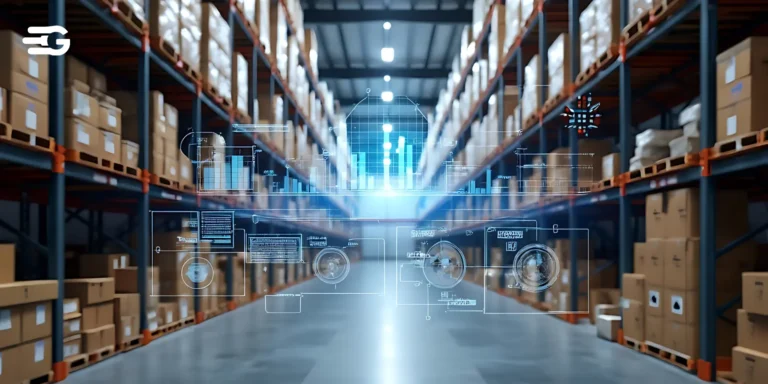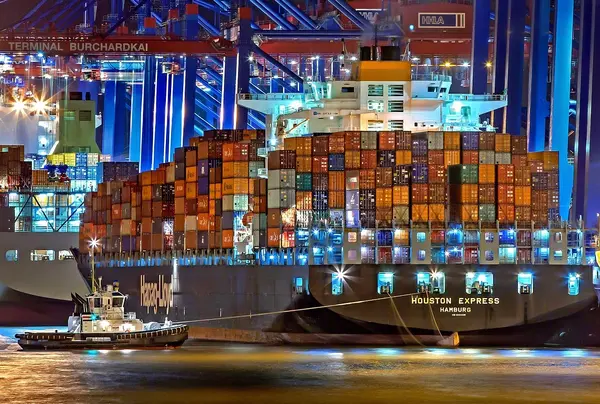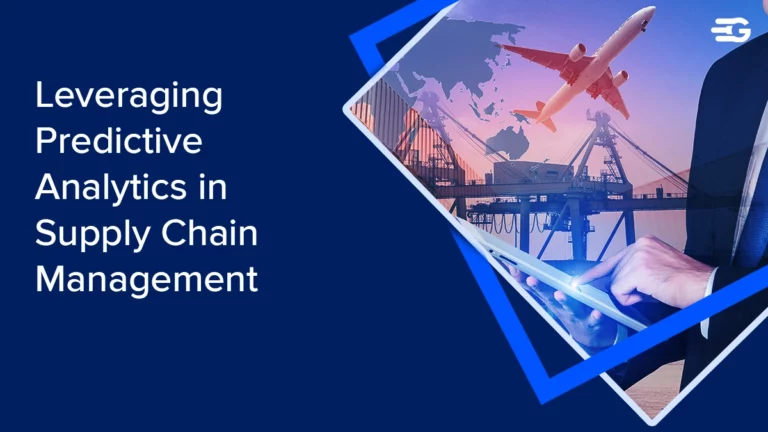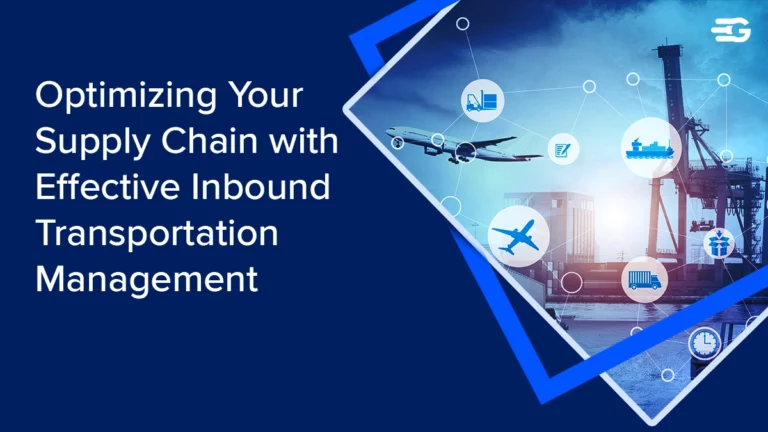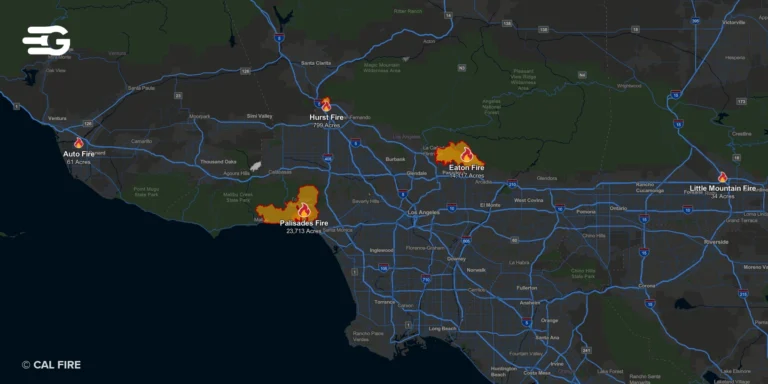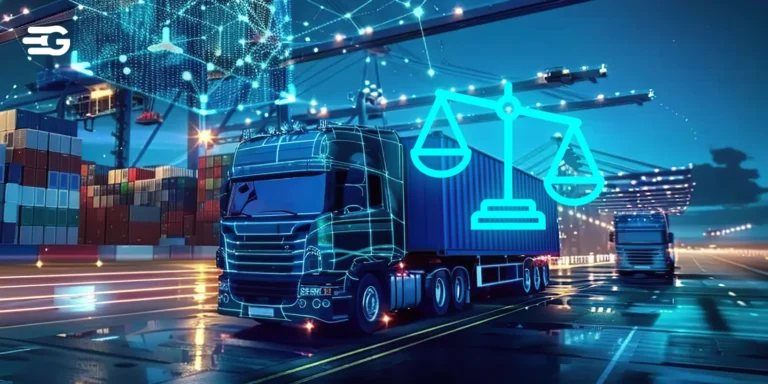Enhancing Supply Chain Dynamics with Transportation and Distribution Management
The Intersection of Transportation and Distribution Management in Supply Chains
Have you ever wondered, if the distribution of goods and cargo is transportation?
Are transportation and distribution different though? Because you transport goods to distribute them and to distribute you need them to be transported, right?
No.
From a supply chain management perspective, transportation and distribution are 2 distinct functions. While there is no disagreement that their operations are intertwined, they are different in several ways.
What are the key elements of transportation management?
Transportation management is the engine that keeps goods moving efficiently throughout the supply chain. It encompasses the planning, execution, and optimization of moving products from origin to destination.
- Route Planning and Optimization: This involves strategizing the most efficient routes for deliveries. Factors like distance, traffic patterns, fuel consumption, and delivery time windows are all considered. Advanced software can analyze vast amounts of data to create optimized routes that minimize travel time and costs.
- Carrier Selection: Choosing the right carrier for your needs is crucial. Transportation management involves evaluating different carriers based on factors like cost, reliability, service offerings (e.g., expedited shipping), and geographic coverage. Building strong relationships with reliable carriers can lead to better rates and service.
- Freight Management: This involves negotiating and managing freight costs associated with transporting goods. It includes tasks like securing competitive rates from carriers, managing freight contracts, and ensuring proper documentation for shipments. Effective freight management helps businesses achieve significant cost savings.
- Shipment Tracking and Visibility: Real-time tracking of shipments provides valuable insights into the location and status of goods in transit. This allows for proactive communication with customers, identification of potential delays, and faster response to any unforeseen circumstances.
- Warehouse Management Integration: Transportation management systems (TMS) often integrate seamlessly with warehouse management systems (WMS). This real-time data exchange ensures efficient coordination between warehousing and transportation activities. For example, order fulfillment data from the WMS can automatically trigger shipment bookings in the TMS, streamlining the entire process.
- Performance Monitoring and Analytics: Data analysis is key to continuous improvement. Transportation management systems provide valuable insights into key performance indicators (KPIs) like on-time delivery rates, transportation costs, and carrier performance. This data allows businesses to identify areas for improvement and optimize their transportation strategies.
Thus, investing in a robust TMS empowers businesses to navigate the complexities of modern logistics and ensure the smooth, cost-effective movement of goods.
From an ideation viewpoint everything discussed so far seems plausible, however, how do ensure this “Efficient Movement of Goods”?
Getting products from origin to destination seamlessly is the backbone of a successful supply chain. This intricate process involves three key stages:
Planning :
Streamlining deliveries starts with meticulous planning. Technology optimizes routes, considering factors like distance, traffic, and delivery windows to ensure the most efficient paths for minimal travel time and cost savings. Choosing the right carrier is also crucial. By evaluating factors like cost, reliability, service offerings, and coverage, businesses can select the perfect carrier for each shipment.
Execution:
Flawless execution takes meticulous planning and turns it into reality. Freight management tackles the nitty-gritty, negotiating the best rates, managing carrier contracts, and securing proper documentation for smooth and cost-effective movement of goods. Real-time shipment tracking keeps you informed, providing constant visibility into location and status. This allows for proactive communication with carriers and faster response to any unforeseen issues.
Optimization:
Optimization is the key to continuous improvement. With diligent performance monitoring of metrics like on-time deliveries, transportation costs, and carrier performance, businesses can pinpoint areas where efficiency can be further enhanced. These data-driven insights are then used to refine routes, re-evaluate carrier selection, and optimize overall transportation strategies.
Also Read: Explore Supply Chain Execution and Strategies
Now is there a scope for optimizing distribution for enhanced customer fulfillment?
The final leg of the supply chain journey – distribution – plays a critical role in exceeding customer expectations.
Distribution Management Strategies:
Warehouse network optimization is a key first step. By strategically placing warehouses closer to customer hubs, you minimize delivery times and transportation costs. Inventory management systems (IMS) are your secret weapon, tracking stock levels across all locations to avoid stockouts or overstocking.
Real-time data from your IMS empowers informed decisions on inventory replenishment and allocation. But it’s not just about inventory; efficient order fulfillment strategies are crucial. Picking and packing processes should be tailored to order frequency, product size, and picking methods to optimize speed and accuracy. A multi-channel distribution approach caters to diverse customer needs by offering standard, expedited, in-store pickup, or even same-day delivery options.
Once your order is on its way, delivery management systems (DMS) come into play. DMS optimizes delivery routes, tracks drivers, and provides estimated delivery windows, enhancing transparency for both you and your customers.
Finally, don’t forget returns management. A customer-centric returns policy with options like free return shipping or easy drop-off locations streamlines the process and fosters customer satisfaction, keeping them coming back for more. By implementing these strategies, you can create a seamless logistics experience that keeps your customers happy and your business thriving.
Transportation and distribution management has the potential to revolutionize logistic operations, but how?
Technology plays a pivotal role in streamlining the movement of goods and optimizing distribution. Transportation Management Systems (TMS) is a game-changer, offering a comprehensive suite of tools to enhance every facet of transport and distribution.
Implementing Transportation Management Systems (TMS)
A TMS acts as a central hub, integrating various transportation functions and activities. It does the heavy lifting in several ways:
First, TMS utilizes advanced algorithms to craft the most efficient routes, considering factors like distance, traffic, and fuel consumption. This translates to minimized travel times and reduced costs.
Next, it streamlines carrier management by facilitating comparisons based on cost, service, and coverage. Negotiating better rates, managing electronic contracts, and automating carrier selection become a breeze. Real-time shipment tracking keeps you informed on location and status, allowing for proactive communication and faster response to any delays.
Furthermore, TMS empowers you to negotiate competitive freight rates, manage contracts electronically, and meticulously track costs for better budgeting. Many TMS solutions integrate seamlessly with Warehouse Management Systems, creating a real-time data exchange that triggers automatic shipment bookings based on warehouse data, ensuring efficient order fulfillment.
But TMS isn’t just about automation; it empowers data-driven decision-making. By providing insights into key metrics like on-time deliveries and transportation costs, TMS helps businesses identify areas for improvement and optimize their entire transportation and distribution strategies.
Finding the right balance between cost-effectiveness and quality service is a constant challenge in transportation and distribution. Here are some key strategies to control expenses without compromising on customer satisfaction:
Optimizing Processes:
Streamlining your routes is key to reducing costs and emissions. Leverage Transportation Management Systems (TMS) technology to create fuel-efficient routes that minimize travel time and distance. Consolidating multiple deliveries into fewer trips takes this a step further, reducing not only fuel consumption but also driver hours.
Efficiency extends within the warehouse as well. Analyze order patterns and product characteristics to optimize picking methods and reduce dwell time. This could involve zone picking for frequently ordered items or batch picking for similar products, minimizing unnecessary travel for staff and maximizing efficiency.
Choosing carriers goes beyond just price. While competitive rates are important, prioritize reliability. Partner with carriers with a proven track record of on-time deliveries and careful handling of your goods. Building strong, long-term relationships with dependable carriers can not only ensure your products arrive safely but can also unlock better rates and service levels in the long run.
Leveraging Technology:
As discussed earlier, top transportation management systems optimize routes, streamline carrier management, and track shipments in real time. These advanced systems leverage data-driven insights to identify areas for cost savings, improve operational efficiency, and enhance the overall performance of transportation logistics.
Further, WMS helps optimize warehouse layout, inventory control, and order fulfillment processes. By minimizing storage time and ensuring optimal stock levels, WMS can significantly reduce warehousing costs.
Negotiation and Collaboration:
Keeping your bottom line healthy requires a keen eye on costs. Negotiate freight rates like a pro! Leverage your shipment volume, contract terms, and even fuel price fluctuations to secure the best deals with carriers. Building strong, consistent partnerships with carriers can also unlock even better rates.
But cost savings don’t stop at the carrier level. Collaborate with your suppliers to optimize packaging and product dimensions. By working together, you can potentially fit more products into a single shipment, reducing transportation costs and creating a win-win situation for both your business and your suppliers.
Right-Sizing Resources:
There’s no point in maintaining underutilized vehicles – consider outsourcing deliveries for low-volume routes or peak seasons. This allows you to scale your resources efficiently.
The same logic applies to your workforce. Strategically schedule staff based on order volume and peak periods. Don’t burden your budget with unnecessary overtime costs – utilize part-time or temporary labor during busy times to ensure efficient staffing without breaking the bank.
Maintaining Service Quality:
Investing in driver training pays off in multiple ways. Well-trained drivers become fuel-efficient aces, minimizing costs and your environmental impact. Safety is paramount, and these training programs equip drivers with the skills to avoid accidents, protecting themselves, their cargo, and everyone on the road. Efficient delivery techniques ensure on-time arrivals, keeping your customers happy.
But a smooth operation goes beyond internal efficiency.
Maintaining open communication and transparency with customers about delivery timelines and potential delays is key. By proactively communicating, you build trust and understanding, even if unexpected situations arise. This keeps your customers informed and frustrations at bay.
Along the economic tightrope, transportation and distribution management infrastructure face major challenges in terms of compliance and documentation as they are not just bureaucratic hurdles; they are essential cornerstones of responsible business practices.
Ensuring smooth and efficient operations in transportation and distribution management goes beyond just optimizing routes and managing costs. Regulatory compliance and meticulous documentation are fundamental pillars that underpin a successful and responsible supply chain.
Let’s delve into the why.
- Compliance with Regulations: The transportation and distribution management is governed by a complex web of regulations. These regulations address safety, security, environmental protection, labor practices, and international trade. Examples include adherence to weight limits for trucks, proper handling of hazardous materials, and compliance with customs regulations for international shipments. Failure to comply with these regulations can have severe consequences, including hefty fines, penalties, delays, impounded goods, and even license suspensions.
- Maintaining Documentation: Proper documentation serves as a vital record of every step a product takes throughout the supply chain. This includes shipping manifests, bills of lading, customs documentation, proof of delivery receipts, and maintenance records for vehicles. These documents provide a clear audit trail, ensuring transparency and accountability in every transaction.
Even the most meticulously planned transportation and distribution management networks can encounter roadblocks. Can we know the most common ones and how to navigate them?
Transportation and distribution management face several challenges. Rising fuel costs can be tackled through route optimization with TMS, negotiating better rates with carriers, and exploring alternative transport options. Labor shortages require competitive wages, streamlined workflows with technology, and promoting work-life balance.
Inventory issues can be solved with robust inventory management systems, collaboration with suppliers, and potentially a just-in-time strategy.
A peep into the future possibilities can enable businesses to prepare the ground for the changes to come in the transportation and distribution management landscape as it is on the cusp of a significant transformation.
The future of logistics is brimming with innovation. Innovations like Delivery drones promise to revolutionize long-haul and last-mile deliveries, enabling 24/7 operations, increased efficiency, and lower costs. However, regulations, safety, and infrastructure need to be addressed.
Thus, there is a potential that competition will morph into collaboration. Companies will look to optimize transportation networks by filling empty capacity on trucks and ships, potentially partnering with competitors or using logistics platforms that connect shippers with carriers. This collaborative approach will lead to a more efficient and sustainable logistics landscape.
Also Read: Introduction to Green Supply Chain Management
GoComet
In this context, while most businesses are in the nascent stage of integrating modern technologies in supply chain operations, GoComet emerges as a powerful tool for businesses to optimize their transportation and distribution processes.
GoComet goes beyond just being a Transportation Management System (TMS). It’s a comprehensive solution that fosters collaboration, leverages AI and data analytics, and prioritizes real-time visibility. By integrating seamlessly with warehouse management systems (WMS), GoComet further streamlines the entire order fulfillment process.
In essence, GoComet empowers businesses to navigate the complexities of modern transportation and distribution with confidence. It equips them with the tools to ensure smooth and cost-effective movement of goods, ultimately contributing to a more competitive and customer-centric supply chain.
Efficient transportation and distribution management is the heart of a thriving supply chain. By using technology for route optimization, carrier selection, and warehouse management, businesses can ensure timely deliveries, minimize costs, and keep customers happy.
Challenges like rising costs and labor shortages require proactive solutions. The future holds promise with autonomous vehicles, warehouse automation, and a focus on sustainability. Businesses that embrace these trends will be well-positioned for success in the evolving world of transportation and distribution.

